In 1941 Eric Ravilious moved to Ironbridge Farm, Shalford, Essex. It was to be the last home he would know. The Second World War had come and he was touring the country painting works on behalf of the War Artists’ Advisory Committee.
The farmhouse, which dates from the 16th century is called Ewen Bridge Farm, though it is also confused as Iron Bridge Farm as there is a bridge with ironwork nearby on a footpath, however this is a coincidence and has no historical reference to the farmhouse.
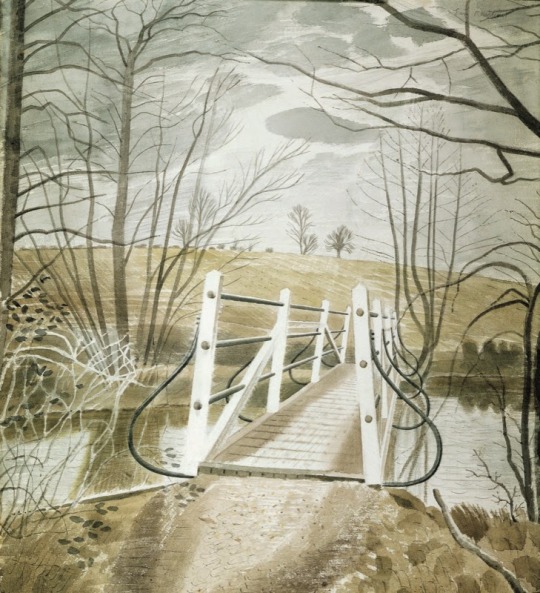
Eric Ravilious – Iron Bridge at Ewenbridge, 1941
In the year before the move from Castle Hedingham to the Farm, Ravilious’s wife Tirzah, was diagnosed with breast cancer and just before moving in 1941, Eric’s mother Emma died, she was 77 years old. Tizah gave birth to Anne Ravilious (Ullmann) and they moved into the farm.
At the end of April, at very short notice, they all moved from Castle Hedingham to a new house, but still in Essex. It was called Ironbridge Farm, at Shalford, near Braintree, and was in the valley of the Pant. The country and the river were looking lovely in the spring. The house, an old one, with very few conveniences. ‡
Eric’s friend Peggy Angus rented Furlongs, a cottage on an a vast country estate and never bought the property, continuing to rent it all her life. Furlongs also had no electricity but did have running water. Peggy’s life may have been the inspiration for the move, and the desire for more space would have been obvious with three children now in the family. The farm was also five miles closer to Great Bardfield than Castle Hedingham.
They rented Ironbridge Farm at Shalton, near Braintree, paying half the rent to their landlord (the Labour politician John Strachey) in Eric’s pictures. †
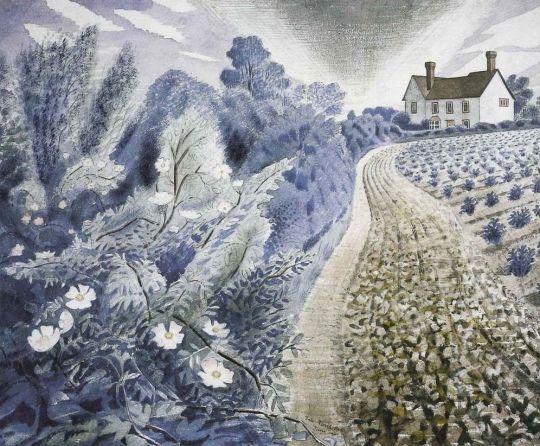
Eric Ravilious – Farm House and Field, 1941
The house then looks to have been clad and whitewashed, however today the building has it’s beams exposed and is painted a light yellow, otherwise externally it is much the same.
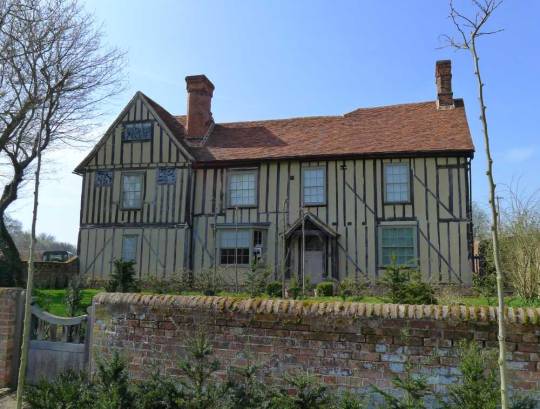
Ironbridge Farm today.
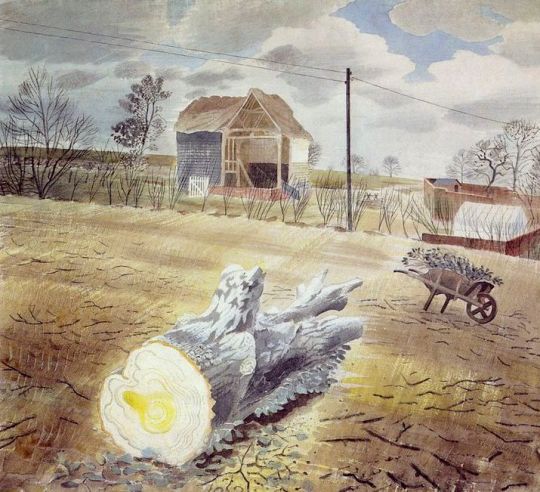
Eric Ravilious – Tree Trunk & Barrow Ironbridge, 1941
The inside of the house looks a lonely whitewashed place. No time for decorating looks to have been spared and with the war and the fact it was a rented property it may not have happened at all, in the following paintings the rooms have few items of furniture in them, making every room look colder. On the wall is another of his paintings from the house. In the interior paintings Ravilious shows us his other works or tubes of paints, it is like he is looking at a mirror with out himself in it.
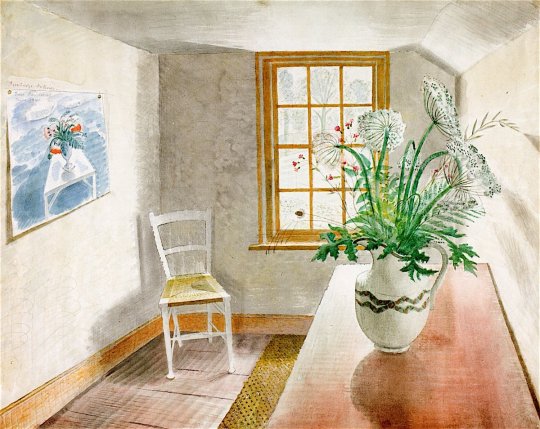
Eric Ravilious – Ironbridge Interior, 1941
In the painting below (Flowers on Cottage Table), the vase on a coaster is an undecorated specimen from Wedgwood for Ravilious’s Boat Race Vase in 1938. It shows that he must have designed for the china with demonstration shapes in front of him.

Eric Ravilious – Boat Race Day Footed Bowl, 1938

Eric Ravilious – Flowers on Cottage Table, 1941
Below is a draft copy of the same painting but in an unfinished state.

Eric Ravilious – Garden Flowers on Cottage Table, 1941
† Ian Carter – Railways and Culture in Britain: The Epitome of Modernity, 2001
‡ Helen Binyon – Eric Ravilious: Memoir of an Artist, 1983
Robert Harling – Ravilious & Wedgwood, 1986